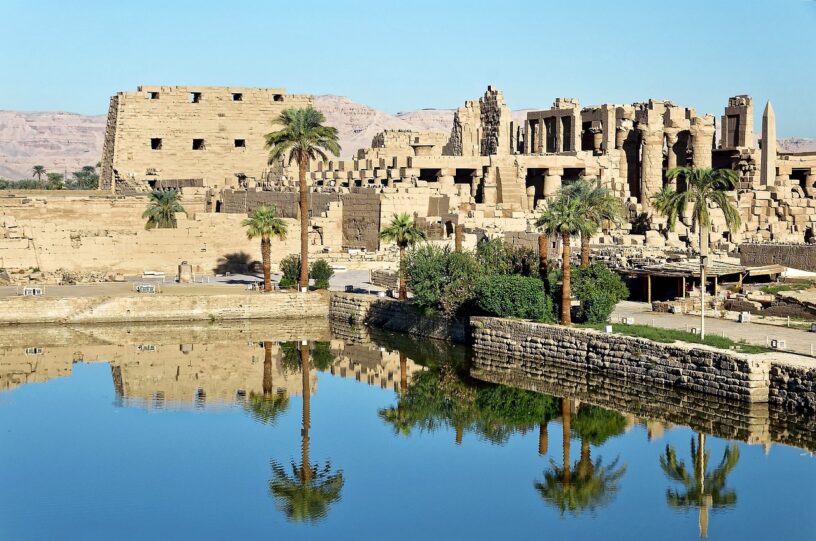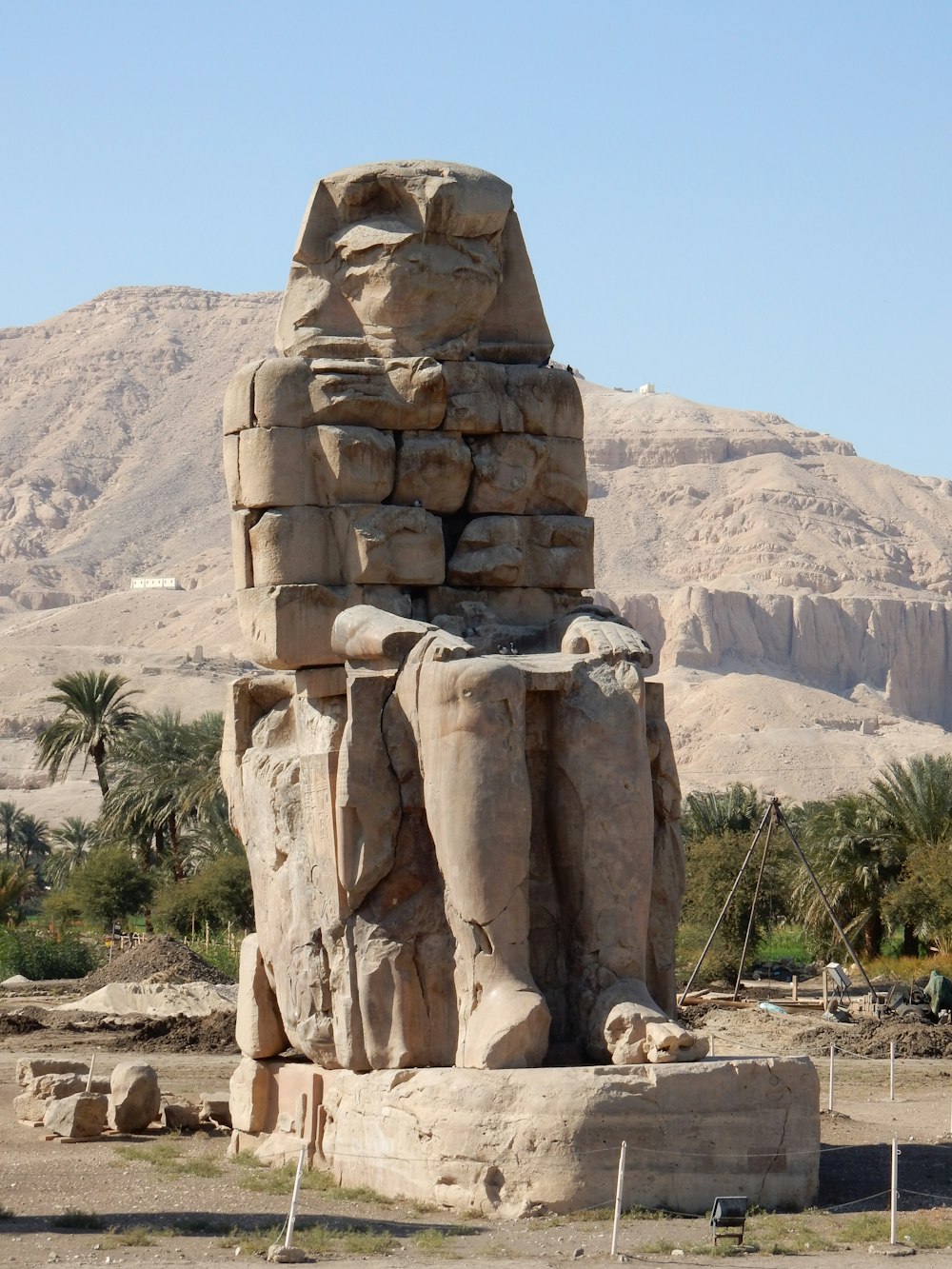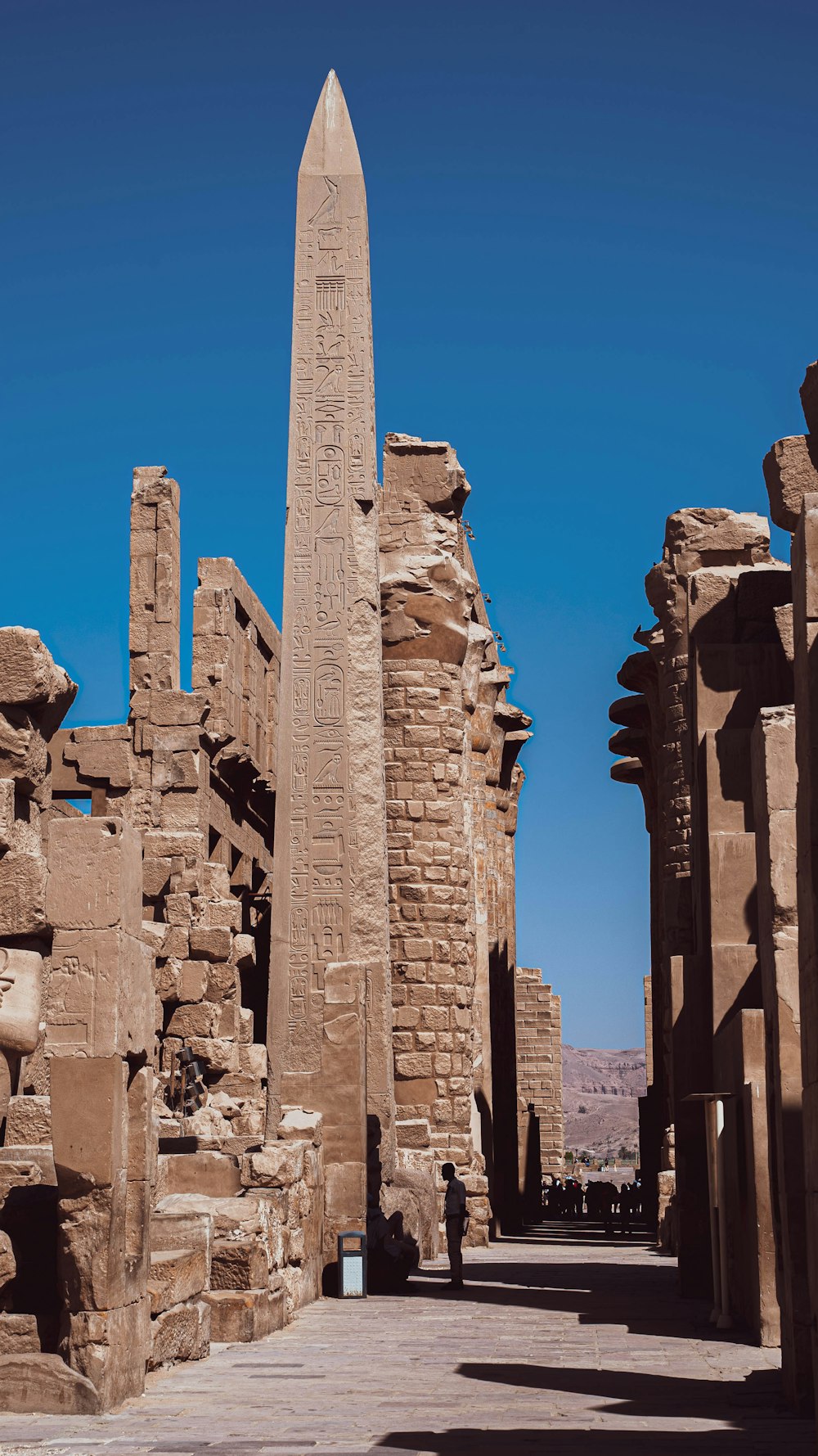10 Great Facts about the City of Luxor in Egypt
Luxor is the ancient jewel of Egypt on the eastern bank of the majestic River Nile. It invites travelers from around the globe to delve into its captivating history. Luxor is a city steeped in ancient marvels and unparalleled grandeur known and was called “Thebes” in antiquity. Its very name evokes mental images of pharaohs and temples. Here, for visitors from around the world, time seems to stand still. The Valley of the Kings awaits. Later on, go admire the resplendent Temple of Karnak. Luxor is a treasure trove of historical wonders. The majestic statues of the Luxor Temple will make you feel the weight of centuries past. Luxor promises to transport you to a realm of ancient splendor and unyielding majesty. Whether you are an avid history enthusiast or simply in search of a transformative cultural experience. Read on to learn 10 great facts about the City of Luxor.
15 Interesting Facts about Ancient Egypt
1. Great Fact: Luxor is Thebes
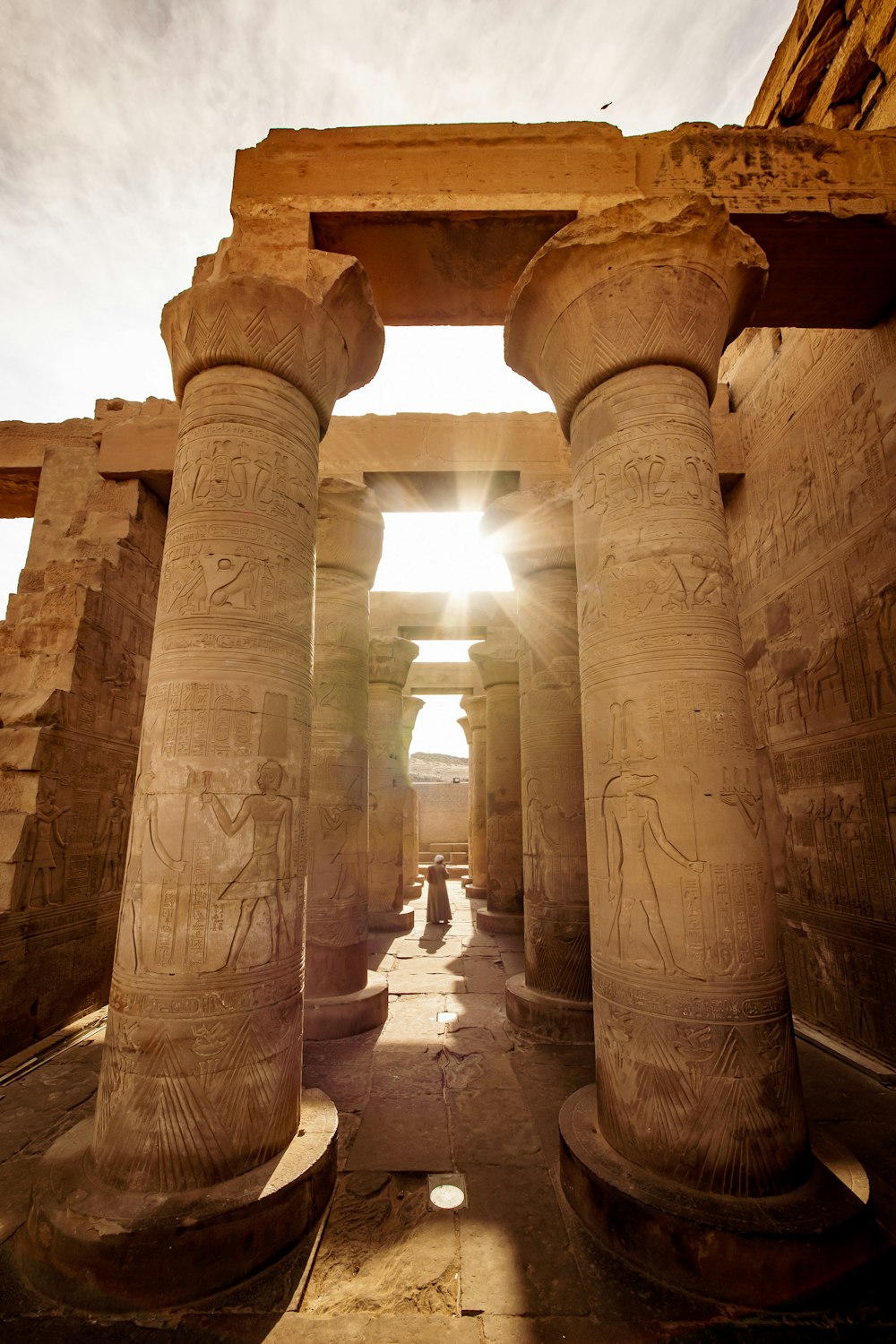
Photo by CALIN STAN on Unsplash
Ancient Thebes, now Luxor played a pivotal role in ancient Egyptian culture. Then, it was the site of some of the empire’s most impressive temples and also a political hub. The astonishing architecture, including colossal columns, intricately carved reliefs, and imposing pylons means it was a significant city. At present its one of Egypt’s most popular tourist destinations. Luxor still holds invaluable relics from its illustrious past, including the Avenue of Sphinxes and the Valley of the Kings. Now, Luxor offers visitors an amazing opportunity to explore its stunning monuments and attractions. This sacred burial ground, nestled within the Theban Hills, immortalizes the stories and beliefs of ancient Egyptian culture. It houses elaborate tombs adorned with captivating murals and hieroglyphs.
2. In Luxor you will walk with Kings

Markh at en.wikipedia, Public domain, via Wikimedia Commons
This sprawling necropolis nestled amidst the arid landscape, played host to numerous esteemed pharaohs and distinguished nobles during the glorious era of the New Kingdom. As if guarding their secrets, the tombs lie hidden within the rugged cliffs, each one a gateway to a fascinating chapter in ancient Egyptian history. The hallowed corridors are adorned with breathtaking wall paintings and exquisitely carved motifs. The beliefs surrounding the afterlife are profound. These elaborate and vivid artistic expressions offer an extraordinary glimpse into the spiritual world of the ancient Egyptians. Every brushstroke and chisel mark depicts a carefully crafted narrative, a testament to their unwavering devotion and reverence for the divine. Among the many illustrious tombs that grace this sacred valley, three stand out as true treasures of antiquity. Envision the solemn processions, the echoes of ancient rituals, and the fervent prayers that once reverberated through these very halls.
Top 10 Amazing Facts About the Valley of Kings in Egypt
3. Enjoy the Enigmatic Splendor of Luxor Temple

© Vyacheslav Argenberg / http://www.vascoplanet.com/, CC BY 4.0, via Wikimedia Commons
The grandeur of ancient Egyptian civilization is showcased by The Luxor Temple. During the reign of Amenhotep III 3000 years ago is when the temple was built. The temple is imposing with its presence of colossal statues and intricately carved columns. Dedicated to the ancient Egyptian gods Amun, Mut, and Chons, Luxor Temple served as a place of worship and celebration during religious festivals and royal ceremonies. Remarkable details depicting scenes of ancient rituals, pharaonic triumphs, and mythological tales are etched into the walls.
The hypostyle hall, adorned with towering columns, takes you on a visual journey through time, while the inner sanctuary reveals a sacred space where the deity statues once resided. Beyond its historical significance, Luxor Temple exudes an undeniable aura of mystery and intrigue. Each passing era left its mark on the majestic structure. The temple has witnessed the rise and fall of civilizations.
Top 10 Facts About the Temple of Luxor
4. Home to the Colossi of Memnon
As one gazes across the verdant fields of Luxor, the magnificent Colossi of Memnon commands attention. The seated figure of Pharaoh Amenhotep III on his throne once formed an integral part of a grand mortuary temple. Standing tall amidst the passage of centuries, these colossal guardians have borne witness to countless sunrises, their ancient presence steeped in myth and legend. A peculiar sound emanates from one of the statues at the break of dawn. It adds an eerie mystique to the surrounding landscape, further fueling the ancient tales. They serve as an enduring emblem of Luxor’s storied past. Their majestic presence and historical significance, the Colossi of Memnon are proof of the craftsmanship and cultural heritage of ancient Egypt.
5. A Female Pharaoh was buried in Luxor

Image by Joanna Gawlica-Giędłek from Pixabay
The Temple of Hatshepsut on the imposing cliffs of Deir el-Bahari unveils a narrative of Egypt’s illustrious female pharaoh. The majestic colonnaded terraces vividly depict reliefs and revered sanctuaries. In itself, it exudes an aura of magnificence and spirituality. Envisioned as a commemorative structure, the Temple of Hatshepsut harmoniously combines artistic mastery and sacred symbolism. The intricately curved colonnades, transport onlookers to a bygone era of opulence and prosperity.
The reliefs adorning the temple’s walls depict the pharaoh’s significant achievements, portraying her as a wise and powerful ruler. These vivid representations offer a glimpse into the remarkable accomplishments of Hatshepsut’s reign, including her flourishing trade expeditions and ambitious building projects. In a male-dominated society, it was unexpected for Hatshepsut’s ascent to the throne. Despite attempts to erase her legacy, her mortuary temple stands as a testament to her achievements and enduring impact.
6. Great Fact: Luxor is an Open-Air Museum
A city of temples and tombs, a treasure trove for history enthusiasts. Luxor offers much more than just ancient wonders; it is a living open-air museum. The city has a seamless integration of its rich past with the everyday activities of its inhabitants. One unmissable stop on your Luxor itinerary is the renowned Luxor Museum. This captivating museum houses an extraordinary collection of statues, jewelry, and intricately carved artifacts from ancient Thebes.
But the allure of Luxor doesn’t end at the museum’s doors. The city’s bustling marketplace offers a vibrant and immersive experience. Here, local vendors proudly showcase replicas of iconic treasures, allowing you to bring a piece of Luxor’s illustrious heritage home with you. As you explore Luxor, the remarkable fusion of the past and the present becomes evident. The ancient ruins coexist harmoniously with the vibrant daily life of the city.
Top 10 Facts About the Luxor Obelisk
7. There is an Avenue of the Sphinxes…….
The Avenue of the Sphinxes is an enchanting pathway adorned with numerous sphinx statues. It serves as a captivating link between the Luxor Temple and the Karnak Temple Complex. Originally it was a ceremonial route for religious processions, this sacred path is steeped in historical significance. The sphinxes are sentinels that are forever alert. They recorded the elaborate ancient rituals that once unfolded along this monumental avenue. The Avenue of the Sphinxes stretches for a remarkable distance, its grandeur accentuated by the rows of finely sculpted sphinx statues lining the way. Their lion bodies and human heads, symbolize the wisdom and power of ancient Egyptian civilization. The Avenue of the Sphinxes acted as a symbolic bridge, connecting mortals to the divine as they embarked on their spiritual journeys.
8. ………… and an Avenue of Rams

Dennis Jarvis from Halifax, Canada, CC BY-SA 2.0, via Wikimedia Commons
Luxor, is renowned for its remarkable ancient pathways. One such impressive pathway is the Avenue of the Rams, situated on the west bank of Luxor. This avenue connected two significant ancient structures: the Temple of Medinet Habu and the Ramesseum, the mortuary temple of the renowned Pharaoh Ramesses II. The Avenue of the Rams derived its name from the colossal statues of sphinxes with ram heads that once stood proudly along its path. These awe-inspiring statues symbolized protection and safeguarded the sacred journey along this historic route. Each step taken on this ancient pathway carries a sense of reverence and wonder, transporting individuals back to a time when pharaohs ruled and monumental structures were erected to honor their legacies.
9. The Luxor is also home to Great Royal Mummies
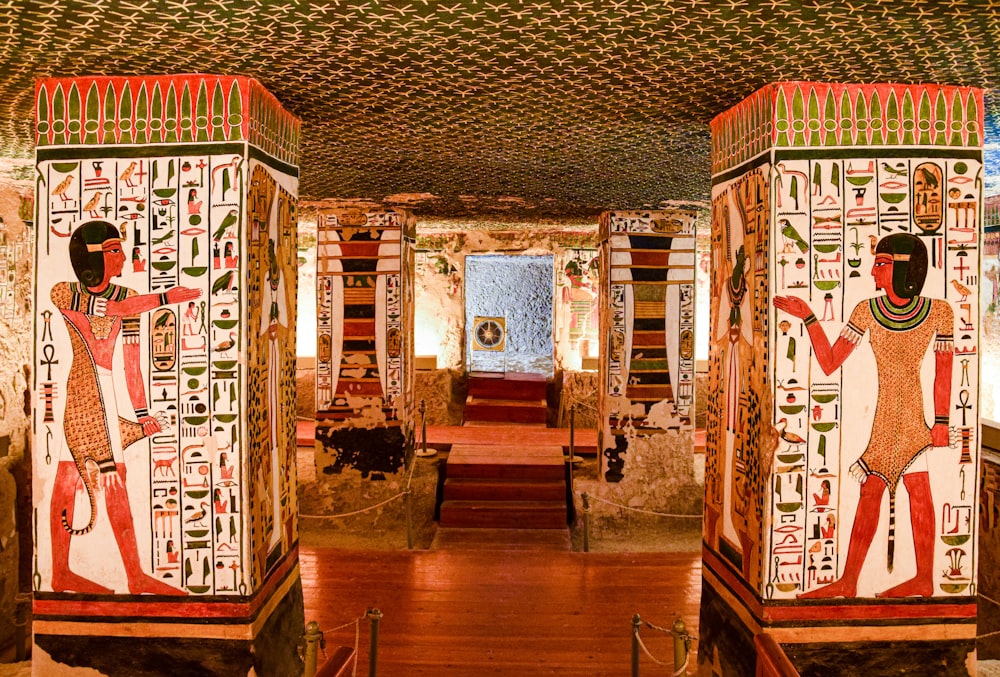
Photo by AXP Photography on Unsplash
Cairo’s Egyptian Museum holds the majority of the famous mummies while Luxor houses a lesser-known collection of royal mummies. Here people delve into the rich history and heritage of Egypt, providing a unique and insightful experience. Luxor Museum houses Pharaohs, Ahmose I, Ramesses I, and Thutmose III. These ancient rulers shaped Egypt’s past, and come to life as their embalmed bodies lay on display. The mummies display the intricate artistry and meticulous embalming techniques employed by the ancient Egyptians. Each mummy tells a story, reflecting the significance of immortality in ancient Egyptian culture. Luxor Museum is a journey of discovery, where the echoes of ancient Egypt resonate with each step.
10 Egyptian Traditions You Should Know About
10. Luxor Hosts the African Film Festival
“Luxor African Film Festival” is among the many celebrations that take place in this magnificent city. This festival serves as a platform for African cinema to shine. It’s a showcase of the best works from talented filmmakers across the continent. “Abu Simbel Sun Festival,” held twice a year is another remarkable festival that captures the attention of both locals and visitors. During this event, the sun’s rays align perfectly to penetrate the innermost sanctuary of the Abu Simbel temples, illuminating the majestic statues of gods within. This natural phenomenon is a testament to the remarkable architectural precision of the ancient Egyptians and serves as a breathtaking spectacle for all who witness it. They attract artists, filmmakers, and cultural enthusiasts from near and far, creating a space for dialogue and connection.
Related Read: 20 Fascinating Facts About Egypt
Luxor is a captivating reminder of the magnificent past of Egypt. Luxor, with its abundance of archaeological treasures, from the magnificent temples of Karnak and Luxor to the glorious Valley of the Kings. One cannot help but feel the pulse of ancient civilizations that once thrived here when stepping onto the East Bank of the Nile. The city’s incredible open-air museum vividly showcases the captivating tales of ancient pharaohs and revered deities. Luxor, with its historical sites and breathtaking landscapes of the Nile River and surrounding desert, captivates visitors with its timeless beauty. As you wander through the captivating streets, an exquisite fusion of contemporary living interwoven with enduring customs will greet you. Every visit becomes an incredibly memorable experience thanks to the locals’ warmth and hospitality.
Planning a trip to Paris ? Get ready !
These are Amazon’s best-selling travel products that you may need for coming to Paris.
Bookstore
- The best travel book : Rick Steves – Paris 2023 – Learn more here
- Fodor’s Paris 2024 – Learn more here
Travel Gear
- Venture Pal Lightweight Backpack – Learn more here
- Samsonite Winfield 2 28″ Luggage – Learn more here
- Swig Savvy’s Stainless Steel Insulated Water Bottle – Learn more here
Check Amazon’s best-seller list for the most popular travel accessories. We sometimes read this list just to find out what new travel products people are buying.

